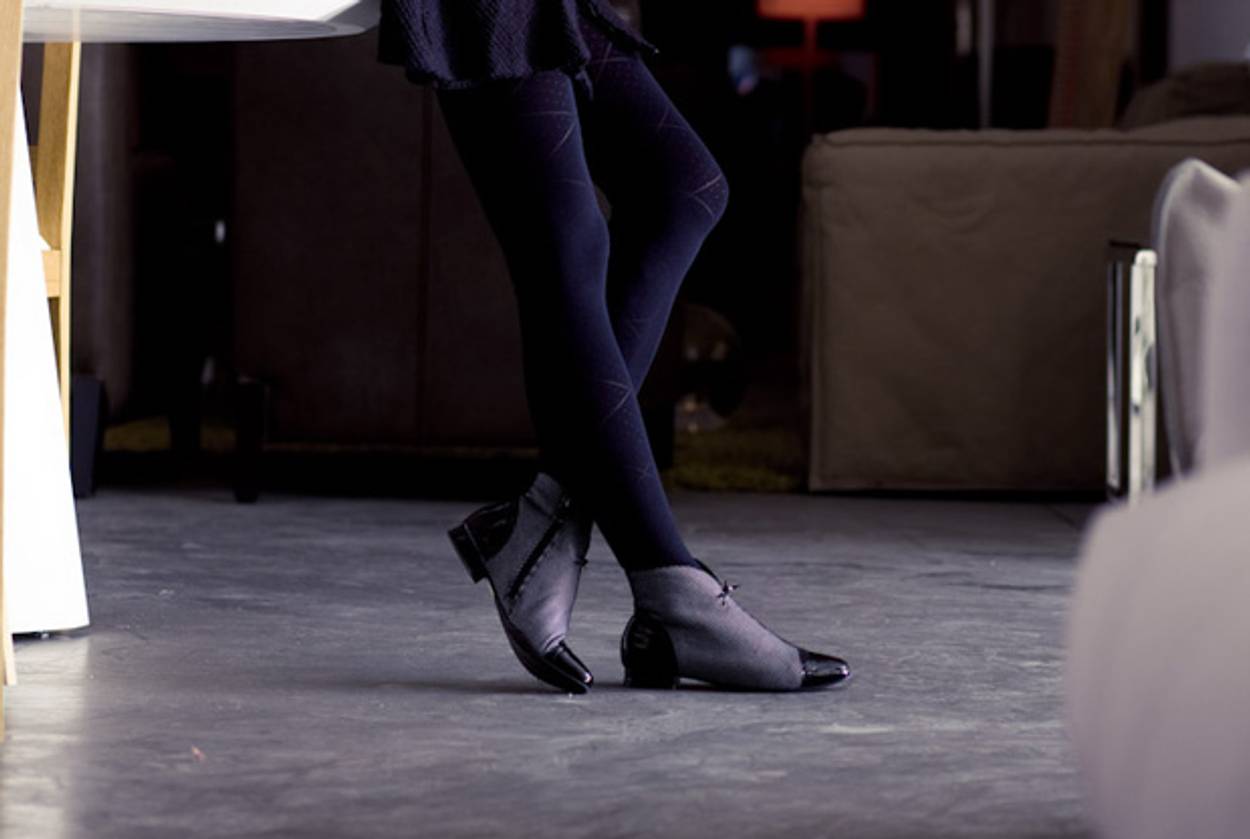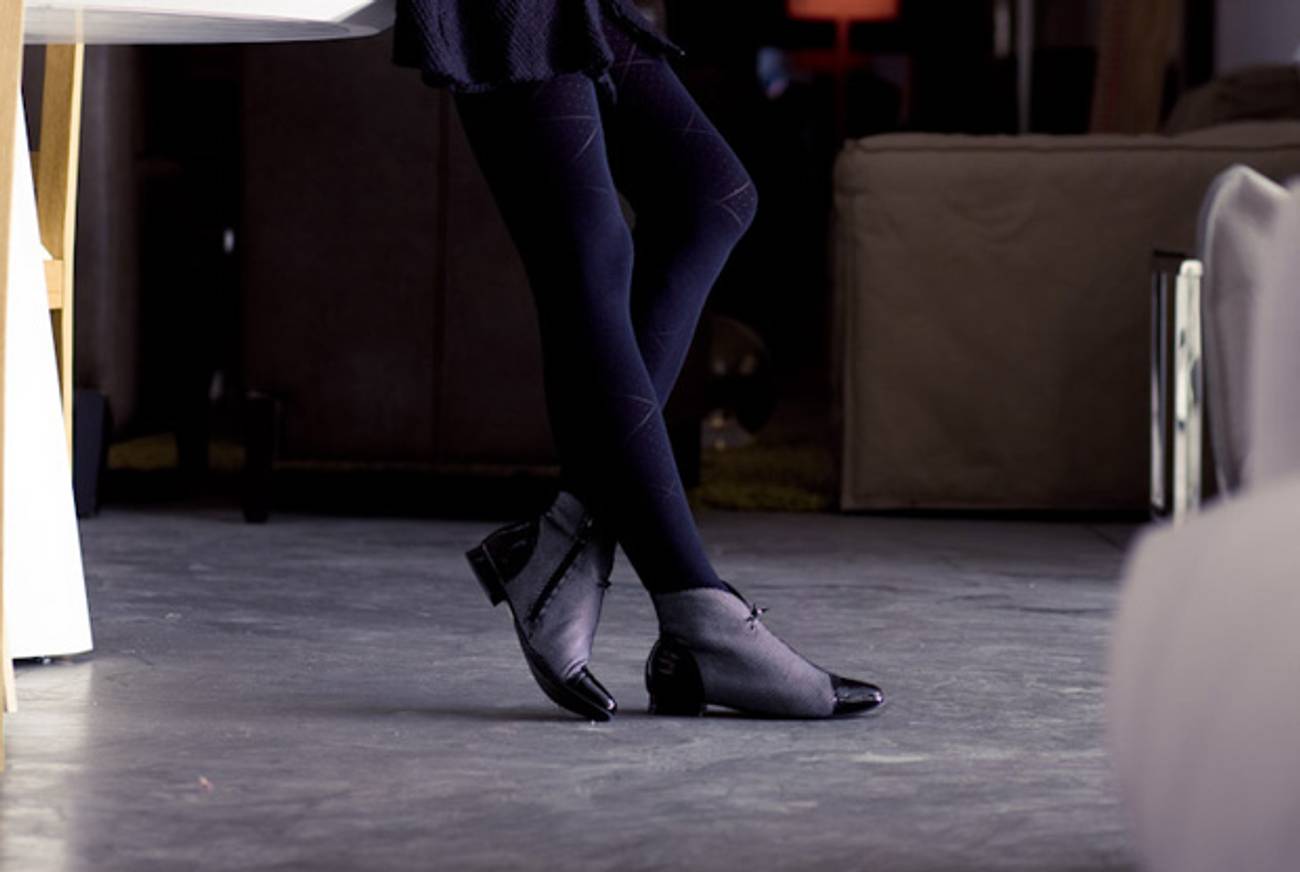Israeli Shoes Go Upscale
Ami Bar-Nahor, the pioneering force behind Naot, is stepping into the luxury market with BeautiFeel Shoes




Ami Bar-Nahor made his name in the shoe business in the 1980s by transforming Naot, a humble sandal company based on an Israel kibbutz, into a stylish international brand of comfort footwear. When he bought a small factory in Tel Aviv in 1989 and started his own company, he wanted to take what he’d learned at Naot to create women’s shoes that were both comfortable and dressy. At the time, this was a novel idea: Millions of women were trudging along urban streets in sneakers, schlepping their “good” shoes in their totes.
His idea caught on. Today, Bar-Nahor sells BeautiFeel Shoes in more than a thousand stores in 17 countries, including Canada, New Zealand, and Russia, and he operates flagship stores in Australia, Israel, and the United States. While he still faces problems in some markets where a “Made in Israel” label is a liability, his original concept for “dressy comfort” footwear has become an industry standard, copied across the globe by other shoe manufacturers, from Crocs to Dr. Scholl’s.
“Not only is every comfort shoe company putting out shoes with heels,” BeautiFeel U.S.A. Operations Manager Kenneth Perez told me in a phone interview, “lots of regular shoe companies are putting out heels with comfort.”
Even high-end shoe designers have become comfort-conscious, Bar-Nahor told me when I caught up with him at the Fashion Footwear Association of New York shoe expo earlier this month: “You go to Giorgio Armani, you see Armani comodo; you go to Gucci, you see Gucci comodo”—comfort shoes with upscale pedigrees. Now that a company like Armani can sell flip flops without sacrificing its credibility in the fashion world, Bar-Nahor—who enjoys referring to himself as “Ami the Shoemaker”—is moving in a new direction. Aiming for “the fashion segment,” BeautiFeel’s new lines for this fall and next spring emphasize what Bar-Nahor calls “luxury comfort.”
“The paradigm,” he said, “has shifted.”
***
Bar-Nahor, who currently lives in Herzliya, was born and raised in Tel Aviv, the son of Polish immigrants. He hadn’t intended to make his career in shoes. After earning two MBAs at Tel Aviv University, he was lured off the academic track by a professor who had started a consulting group to help failing Israeli companies. In 1988, Bar-Nahor was sent by the university to Naot’s struggling shoe-making factory at Kibbutz Neot Mordechai in the Upper Galilee; six months later, he had come up with a financing and marketing strategy as well as an innovative new product. “The idea was to Israelize Birkenstock,” he told me—to make an iconic hippie sandal, but “in a more innovative, a more Israeli way.” For instance, he started producing shoes in colors that Birkenstock didn’t use at that time, including purple, teal, and mauve. They were a hit, and the company—which had been founded in 1942—was revived.
Then, in 1989, Bar-Nahor left Naot to start his own company, with the idea of creating “dressy comfort” shoes with heels. He started small: “I bought a very small factory which was, like, 1,000 square feet, and had five old machines,” he said. “And I hired five old people.”
Because of Bar-Nahor’s success with Naot, even retailers with reservations about putting heels on comfort shoes were willing to take a chance on BeautiFeel. The Israeli factor lent the shoes cachet in an industry that’s obviously heavily Jewish—see Aquatalia by Marvin Krasnow, for instance, or the “Kibitz Sandal” by legendary shoeman Stuart Weizman—and in heavily Jewish markets like New York and Los Angeles, where BeautiFeel’s American flagship store is located.
In other markets, however, the Israeli connection has proven problematic. Bar-Nahor recalled one incident from about 10 years ago: “This shoe-store owner in Houston called me up and said, ‘Hey, Ami, you know what happened?’ A customer was at the cash register about to pay for a pair of BeautiFeels. And when she saw on the shoebox that they were made in Israel, she said, ‘Oh, no, I don’t want to buy it.’ ” Instead of shrinking from the moment, though, Bar-Nahor raced right into it: He immediately changed the label inside his shoes from “BeautiFeel” to “BeautiFeel Made in Israel.”
“I wanted to make sure that there will be no mistake,” he said.
He remembered another incident involving an English department store: “Just before signing the order, they ask if I can remove the ‘Made in Israel,’ and I said, ‘I can, but I don’t want to do it.’ So, the next day, they canceled the order.” And just last year, when Palestinian and Jewish Unity, an organization that is part of the BDS movement, began staging demonstrations in front of Montreal’s Boutique Le Marcheur to convince store owner Yves Archambault to stop selling BeautiFeel, Bar-Nahor went there to counter the protesters. “I held a press conference,” he said. “They are still doing it. It makes me crazy.”
“But I don’t want to be in politics,” he noted. “Yes, we have obstacles. We suffer from the politics and from the bad economy even more. But we just want to do our business in a nice way, be innovative, and to sell shoes.”
BeautiFeel has expanded a great deal since its early days; some 200 employees now work at a 30,000-square-foot factory in Rishon LeZion. But it remains a family business. One of Bar-Nahor’s daughters, Osnat, is the company’s operations manager. And Bar-Nahor’s Russian-born wife Anya, who immigrated to Israel from St. Petersburg as a teenager, is vice president in charge of product development and design.
“She is the mother of all this creation,” Bar-Nahor said of Anya, gesturing at the array of pumps, sandals, wedges, and ballet flats—most of them priced in the $200 to $300 range—displayed at the shoe expo. The Spring 2013 collection is dazzling and trendy: in bronze and gold metallics, a sensuous snakeskin print, and brilliant colors such as “ocean” (a hot turquoise) and “red glitter” (a sizzling cherry red). There also seem to be more platforms and 2- and 3-inch heels than ever. (Three inches is the absolute outside height limit for heels, Anya told me, if you’re looking for a shoe in which you can actually walk and walk and walk.) With the new spring collection, “they’ve really gone to another level of class,” as Jeff Roth, a buyer for Eneslow, a comfort-shoe chain in New York, told me. “It really surprised me. It’s a step beyond anything I expected to see. Really elegant.”
At the expo, Bar-Nahor sometimes found that words aren’t sufficient to describe his creations; sometimes, he’d jump up and grab a shoe—showing me, for instance, the delicate gold links, much lighter than buckles, giving closure to “Sato,” a buttery gold leather sandal. Or on “Elita,” a graceful beige evening pump, the whimsical beige flower that opens to reveal hidden elastic and Velcro that make the width across the front of the foot adjustable.
He was less expansive about his company’s revenues or exact sales figures. When I later tried to pin him down about specifics in a phone call, he turned once again to his family to explain how he measures success.
“Let me tell you about a dream of my 28-year-old daughter,” he said over the phone. “When she was a child, she told me once, ‘I dreamed that every woman in the world was wearing your shoes.’ And I said, ‘I will take your dream and fulfill it.’ ”
***
Like this article? Sign up for our Daily Digest to get Tablet Magazine’s new content in your inbox each morning.
Elin Schoen Brockman has written for the New York Times, Hadassah Magazine, and other publications. She is currently working on a novel.
Elin Schoen Brockman has written for the New York Times, Hadassah Magazine, and other publications. She is currently working on a novel.